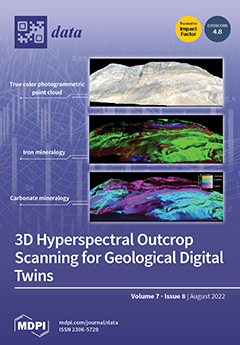Open AccessArticle
An Evaluation of the OpenWeatherMap API versus INMET Using Weather Data from Two Brazilian Cities: Recife and Campina Grande
by
Anwar Musah, Livia Màrcia Mosso Dutra, Aisha Aldosery, Ella Browning, Tercio Ambrizzi, Iuri Valerio Graciano Borges, Merve Tunali, Selma Başibüyük, Orhan Yenigün, Giselle Machado Magalhaes Moreno, Ana Clara Gomes da Silva, Wellington Pinheiro dos Santos, Clarisse Lins de Lima, Tiago Massoni, Kate Elizabeth Jones, Luiza Cintra Campos and Patty Kostkova
Cited by 11 | Viewed by 9577
Abstract
Certain weather conditions are inadvertently related to increased population of various mosquitoes. In order to predict the burden of mosquito populations in the Global South, it is imperative to integrate weather-related risk factors into such predictive models. There are a lot of online
[...] Read more.
Certain weather conditions are inadvertently related to increased population of various mosquitoes. In order to predict the burden of mosquito populations in the Global South, it is imperative to integrate weather-related risk factors into such predictive models. There are a lot of online open-source weather platforms that provide historical, current and future weather forecasts which can be utilised for general predictions, and these electronic sources serve as an alternate option for weather data when physical weather stations are inaccessible (or inactive). Before using data from such online source, it is important to assess the accuracy against some baseline measure. In this paper, we therefore evaluated the accuracy and suitability of weather forecasts of two parameters namely temperature and humidity from the OpenWeatherMap API (an online weather platform) and compared them with actual measurements collected from the Brazilian weather stations (INMET). The evaluation was focused on two Brazilian cites, namely, Recife and Campina Grande. The intention is to prepare an early warning model which will harness data from OpenWeatherMap API for mosquito prediction.
Full article
►▼
Show Figures





